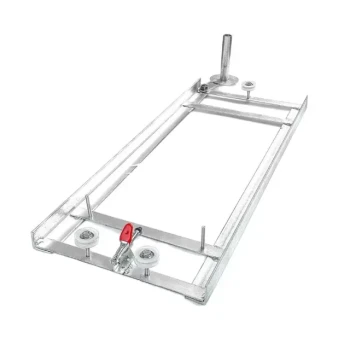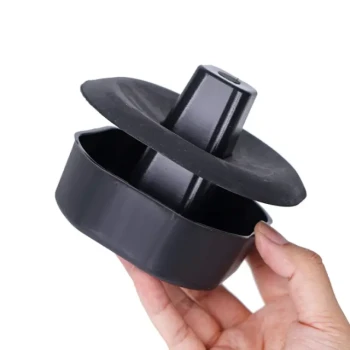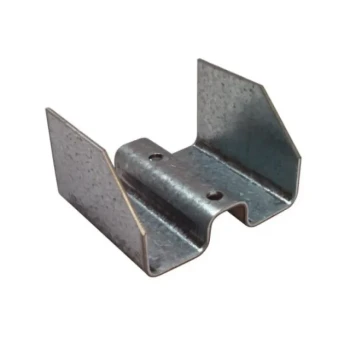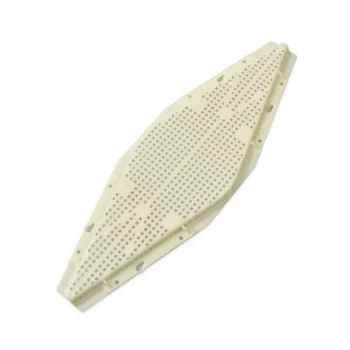Choosing between a solid and screened bottom board is a foundational decision in beekeeping that directly impacts hive health, pest management, and seasonal success. While a solid bottom offers better insulation and protection from the elements, a screened bottom provides superior ventilation and a passive defense against Varroa mites. The right choice depends entirely on your climate, management style, and specific goals for the colony.
The core decision balances heat retention against ventilation and pest control. Solid bottom boards conserve heat, which is vital for winter survival and spring buildup, while screened bottom boards manage moisture and help control Varroa mite populations, which is crucial for summer health.
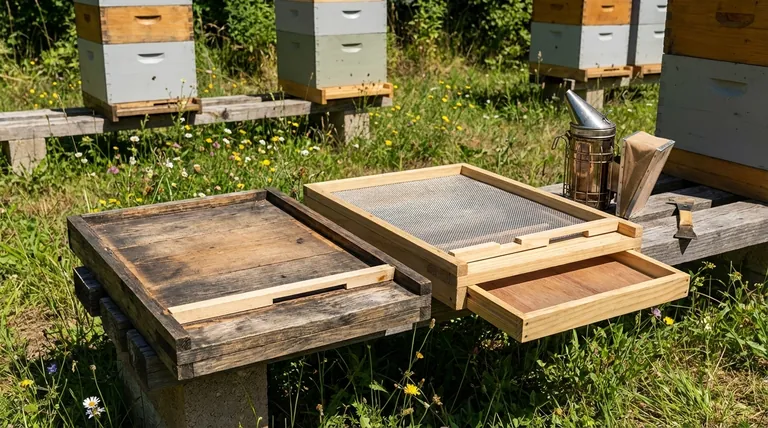
The Case for Solid Bottom Boards
Solid bottom boards are the traditional design, consisting of a single, solid piece of wood that forms the floor of the hive. Their primary benefits revolve around insulation and creating a more contained environment.
Superior Thermal Regulation
A solid bottom retains heat far more effectively than a screened version. This is critical in colder climates, as it helps the cluster maintain its necessary temperature during winter with less effort and honey consumption.
This heat retention also provides an advantage in the spring, allowing the queen to begin laying earlier and the colony to build its population more quickly in preparation for the first nectar flow.
Protection from the Elements
By creating a solid floor, this design prevents cold drafts from entering the hive from below. This protection is especially important during winter storms or in windy locations, reducing stress on the colony.
Lower Initial Cost
Solid bottom boards are typically simpler in construction and therefore less expensive than their screened counterparts. For beekeepers starting multiple hives on a budget, this can be a significant factor.
The Case for Screened Bottom Boards
Also known as an Integrated Pest Management (IPM) board, a screened bottom board replaces the solid wood floor with a durable wire mesh. This design has gained immense popularity for its benefits in ventilation and pest control.
Enhanced Hive Ventilation
The screen allows for constant air circulation, which is a major advantage in hot and humid climates. This ventilation helps reduce excess moisture inside the hive, preventing the growth of mold and mildew.
During a heavy nectar flow, bees must dehydrate nectar to turn it into honey. A screened bottom dramatically aids this fanning process, reducing the colony's workload.
Passive Varroa Mite Control
This is arguably the most significant benefit. When Varroa mites fall off a bee, they can drop through the screen and out of the hive. This simple mechanism disrupts the mites' ability to reattach to another host, passively reducing the overall mite population within the colony.
Simplified Debris Management
Hive debris, such as wax cappings, pollen pellets, and dead bees, naturally falls through the screen. This keeps the hive floor cleaner, reducing potential habitats for other pests like wax moths and small hive beetles.
Easy Mite Monitoring
Most screened bottom boards come with a removable insert, often called a "sticky board." By sliding this board in for a 24-48 hour period, you can perform a "mite drop count" to accurately assess the Varroa infestation level in your hive without having to disturb the bees.
Understanding the Trade-offs
Neither option is a perfect solution, and it is crucial to understand their respective downsides to manage your hive effectively.
Downsides of Solid Bottoms
The lack of ventilation can be a serious problem in summer, forcing bees to spend more energy cooling the hive instead of foraging. The buildup of debris on the floor can also become a breeding ground for pests if not cleaned regularly.
Downsides of Screened Bottoms
In cold climates, the "chimney effect" of a screened bottom can make it harder for the colony to stay warm in winter. While many bees can survive with an open screen even in snow, it may increase their winter honey consumption. It is common practice to use the removable insert to close the screen during the coldest months.
Making the Right Choice for Your Goal
Ultimately, the best approach is one that is adapted to your specific climate and goals. Many beekeepers use both systems to their advantage.
- If your primary focus is simplicity and cold climate survival: A solid bottom board is a reliable, traditional choice that excels at heat retention.
- If your primary focus is Varroa mite management and summer ventilation: A screened bottom board provides a clear advantage in controlling pests and reducing hive moisture.
- If your primary focus is optimal year-round management: Using a screened bottom board with its removable insert offers the most flexibility, allowing you to have an open screen in summer and a closed, insulated floor in winter.
Your role as a beekeeper is to provide the best possible environment, and choosing the right foundation is the first step in that process.
Summary Table:
| Feature | Solid Bottom Board | Screened Bottom Board |
|---|---|---|
| Primary Benefit | Superior heat retention & insulation | Enhanced ventilation & passive Varroa mite control |
| Best For | Cold climates, winter survival, simplicity | Hot/humid climates, Integrated Pest Management (IPM) |
| Key Consideration | Can lead to moisture/hot air buildup in summer | Can cause heat loss in winter (requires insert) |
Equip Your Apiary with the Right Foundation from HONESTBEE
Choosing the correct bottom board is critical for hive productivity and health. As a trusted wholesale supplier to commercial apiaries and equipment distributors, HONESTBEE provides durable, high-quality bottom boards designed for professional beekeeping success.
We can help you select the ideal equipment—whether solid, screened, or a combination—to meet your specific operational goals and regional challenges.
Boost your hive management efficiency. Contact our expert team today to discuss your wholesale needs and optimize your beekeeping operation.
Visual Guide
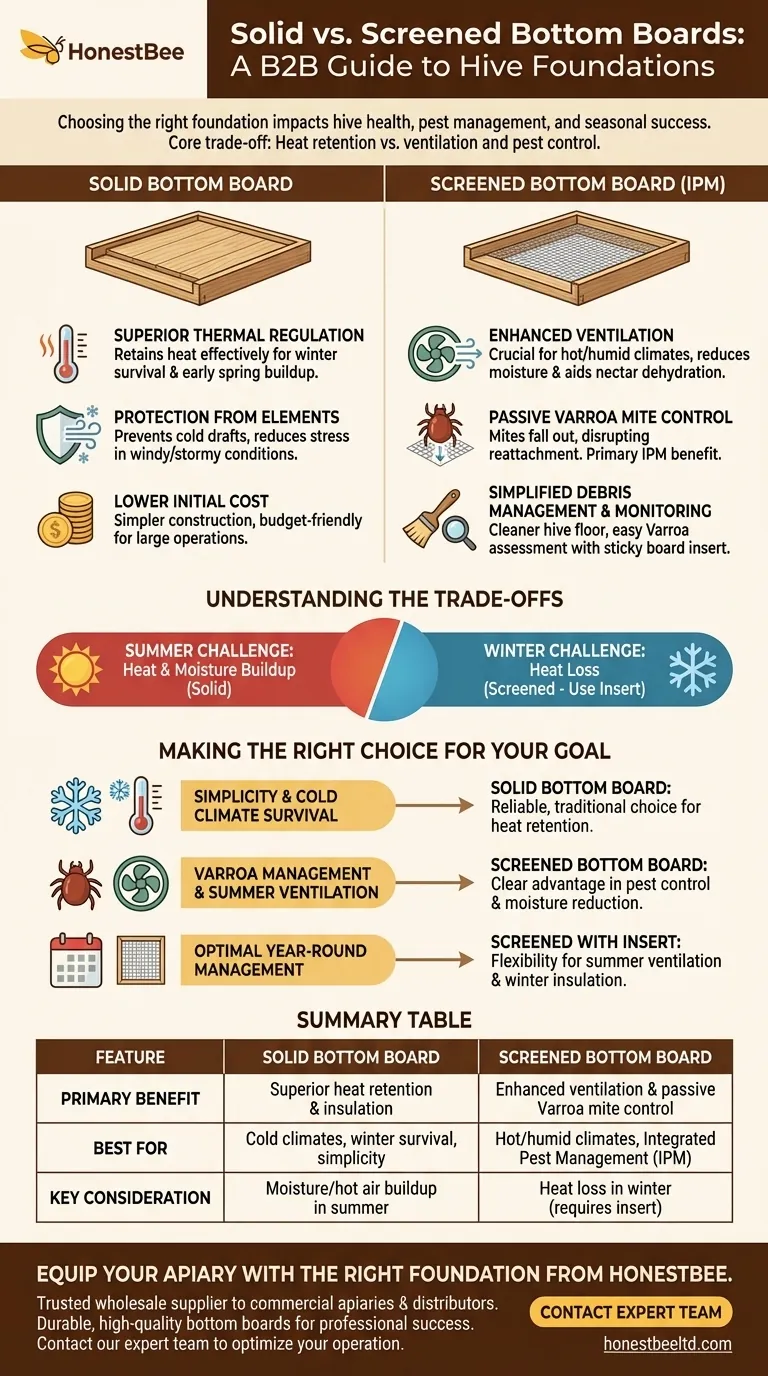
Related Products
- Langstroth Screen Bottom Board for Beekeeping Wholesale
- Australian Pine Wood Langstroth Screen Bottom Board for Wholesale
- Langstroth Solid Bottom Board for Beekeeping
- Professional Galvanized Hive Strap with Secure Locking Buckle for Beekeeping
- Professional Insulated Winter Hive Wrap for Beekeeping
People Also Ask
- What are the assembly options for the Cypress Screened Bottom Board? Ready-to-Use for Immediate Hive Health
- How does a screened bottom board assist with temperature control and pest management? A Key Tool for Modern Beekeeping
- What are the advantages of a screened bottom board? Boost Hive Health with Superior Ventilation & Pest Control
- How should the screened bottom board be used throughout the year? A Guide for Healthy Hives
- What are the benefits of using a screened bottom board in warm or humid climates? Boost Hive Health & Control Pests






